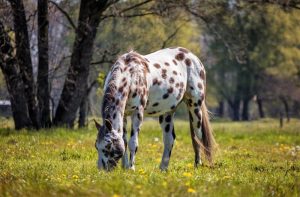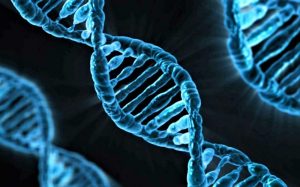Phenotype
The genotype is basically the genetic constitution of an organism. The genotype is responsible for determining the potentials and hereditary limitations that an individual possesses from embryonic formation to adulthood. Among sexually reproducing organisms, an individual's genotype comprises a complex set of genes that are inherited from both parents. It can be mathematically demonstrated that sexual reproduction practically guarantees that each individual will have a unique genotype with the exception of those individuals, such as identical twins, that are derived from the same egg that has been fertilized.
What is phenotype?
The phenotype is any characteristic of an individual such as morphology, development, physiology and behavior. It is affected by environmental factors and by the interactions that the individual has with it.
About the phenotype
An individual’s phenotype consists of the composition, in the individual’s genome, of a specific region of DNA that varies within a population. The individual’s genome is the total collection of DNA found in the chromosomes of a cell. It includes all of the individual’s genes as well as the DNA sequences between them. A genotype may represent a single nucleotide of DNA, at a specific location on a chromosome, but it may also be a repeated sequence of nucleotides several times, a large duplication, or an elimination of some of them.
Most variations in genotypes cause no difference in the proteins produced by the cell, because genes, which encode proteins, occupy only about 2 percent of the total genome. However, when a specific genotype affects the composition or expression of a protein, diseases or changes in physical appearance may occur. The physical effect of a particular genotype is known as its phenotype or trait.
Etymology
The word phenotype is a word in itself modern that is formed by the root of the Greek verb “phainein” that means to hit and of the word typtein and typos that mean prototype, typology or logo. It arose in opposition to the word genotype. The discovery is attributed to Mendel, who was the first to understand the dual nature of organisms, their dichotomy between their genotype and their phenotype. The phenotype is the expression of the genotype. The word phenotype is a structural concept, an entity.
Characteristics of phenotype
Among the most outstanding characteristics of the phenotypes we can mention the following:
- They can be observed through biochemical
- The phenotype of an individual can be affected by the relationship it has with the environment that surrounds it.
- The phenotype of an organism, not only involves observable characteristics, such as morphology, but also includes molecules and structures such as RNA and proteins produced encoded by genes.
- It is mainly determined by the genotype or by the equality in the alleles.
- The equation scientists use to describe the phenotype is: environment + genotype + environment* genotype = phenotype.
- They have variability and this is known as polyphasia or polyphenism.
- They can be identified through molecular biology and different experiments of human or animal reproduction.
- Attitudes and behavior are considered part of the phenotype.
Types of phenotype
- Ontogenetic phenotype: this type of phenotype is in constant transformation from the moment it is conceived until its death. It is the change in structure that occurs in an individual continuously and always triggered by environmental interactions.
- Dominant phenotype: they are produced by the dominant alleles that the individuals have. It is the most frequent and the most prevalent in the progeny.
- Recessive phenotype: in order for this type of phenotype occurs, the individual must have two copies from each parent. In order to manifest the alleles, they must be alone.
- Morphological phenotype: it is linked to individuals’ shape.
- Behavioral phenotype: it is linked to the different behaviors that are developed in order to adapt to the demands produced by the environment in which an individual develops.
Examples
A person may have been born with white skin, but with the passage of time and by the effects of the sun, this color may well become a dark color.
In the plants you can see several examples as for example in the hydrangea which is a plant that may have blue or pink flowers, which would be its phenotype, but depending on the type of soil in which they grow or the environment the plant may vary its flowers in blue if the soil is acidic and pink if the soil has a basic ph.
How to cite this article?
Briceño V., Gabriela. (2019). Phenotype. Recovered on 23 February, 2024, de Euston96: https://www.euston96.com/en/phenotype/










